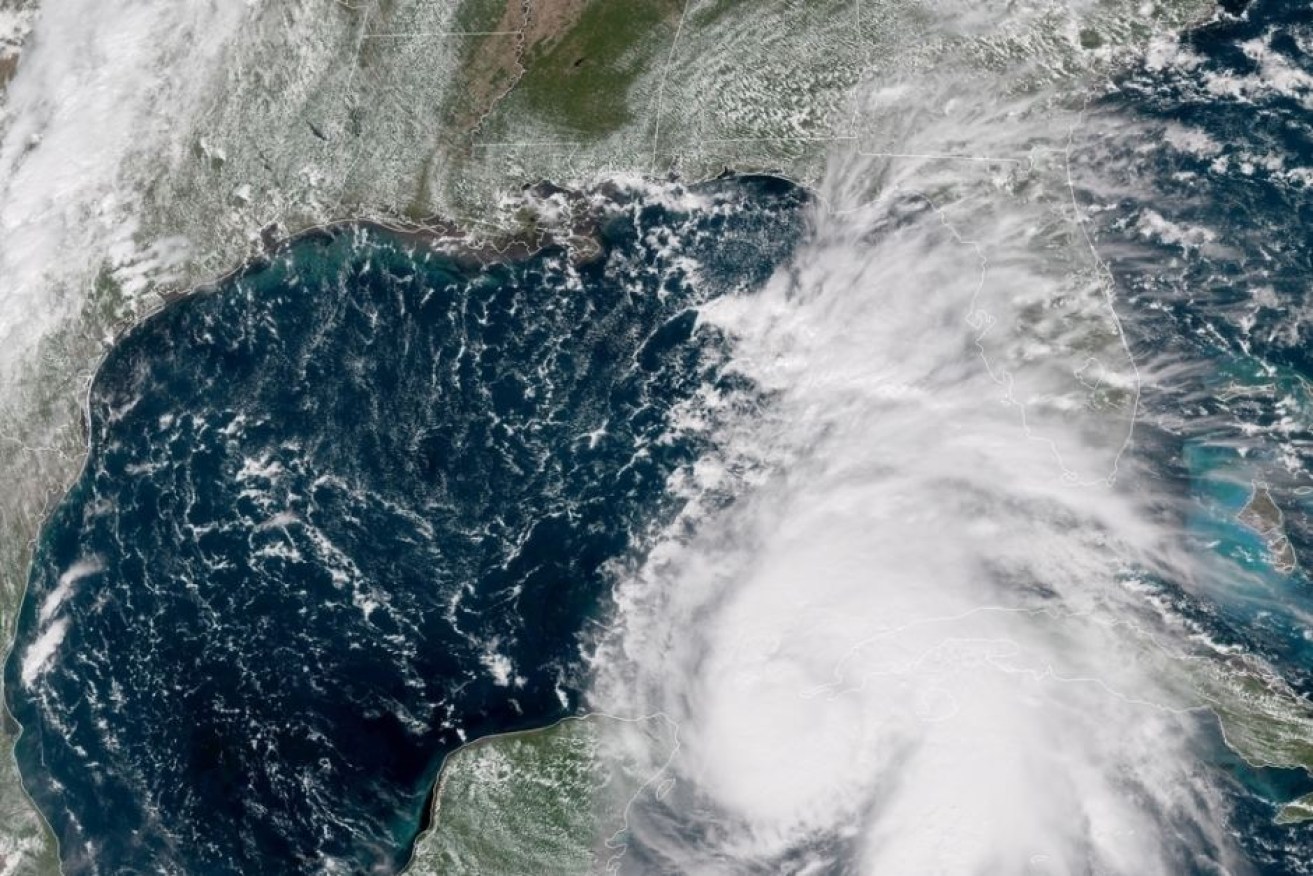Hurricane Michael strengthens off Florida coast, authorities brace for 200km/h winds

Hurricane Michael is now a category 4 storm as it moves closer to Florida. Photo: NOAA
Hurricane Michael is strengthening rapidly and forecasters on Wednesday say it is now an “extremely dangerous” category 4 system.
According to forecasters, it is expected to become one of north-western Florida’s worst hurricanes in memory with winds of more than 200km/h and a storm surge of up to four metres.
The National Hurricane Centre (NHC) said a “life-threatening storm surge” is expected along much of the coast of the region, which is also known as the Panhandle.
Michael battered parts of Mexico and Cuba with powerful winds and drenching rain on Sunday and into early Monday (local time).

Waves crash against the Malecon, triggered by the outer bands of Hurricane Michael, as workers drive past in a truck in Havana, Cuba. Photo: AAP
Right now, the storm is about 220 kilometres south-southwest of Panama City, Florida.
But forecasters said winds and outer rain bands of a storm, which are strengthening and becoming better organised by the hour, would begin lashing the coast well ahead of the eye making landfall.
Hurricane #Michael is now an extremely dangerous category 4 hurricane and its outer rainbands are beginning to reach the coast. This is a life-threatening event for portions of the northeastern Gulf Coast. Go to https://t.co/tW4KeGdBFb for details. pic.twitter.com/RtozXvcTE6
— National Hurricane Center (@NHC_Atlantic) October 10, 2018
Florida officials said roughly 375,000 people up and down the Gulf Coast had been urged or ordered to evacuate.
Evacuations spanned 22 counties from the Florida Panhandle into north-central Florida.
But fears lingered that some had failed to heed the calls to get out of Michael’s way as the hard-charging storm began speeding north over the warm waters of the Gulf of Mexico.

Al Smith puts plywood over a window as he prepares for the arrival of Hurricane Michael in Port St. Joe, Florida. Photo: Getty
But NHC senior hurricane specialist Jack Beven said the storm would not linger.
“We anticipate it’s going to keep moving probably at least 12 miles (19 kilometres) per hour, probably move faster than that, particularly on Wednesday night and Thursday (local time) as it goes through the south-eastern United States,” he said.
“It is not going to linger like Florence did, like Harvey did. It will move through the south-eastern United States and go out the Atlantic probably by Thursday.”
The Commodity Weather Group said Michael was not likely to cause much interruption to oil and gas production.
The Gulf of Mexico is home to 17 per cent of daily US crude oil output and 5 per cent of daily natural gas output, according to the US Energy Information Administration.
More than 45 per cent of the nation’s refining capacity is located along the US Gulf Coast, which also is home to 51 per cent of total US natural gas processing capability.
–ABC/wires






